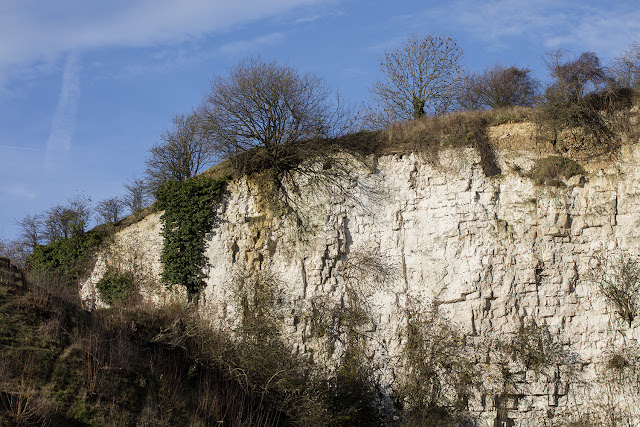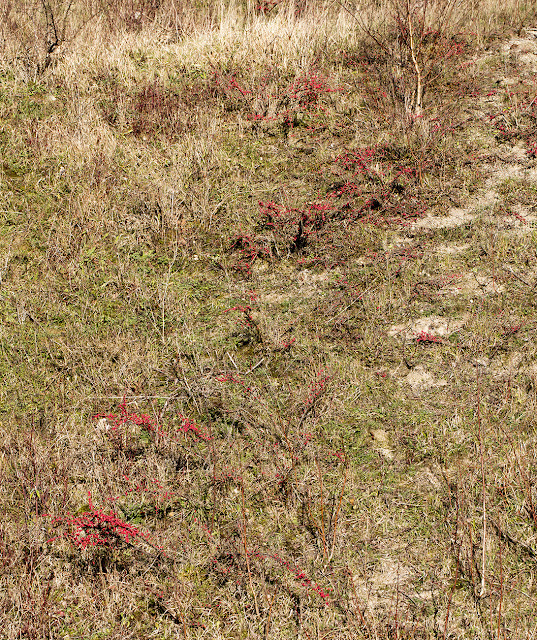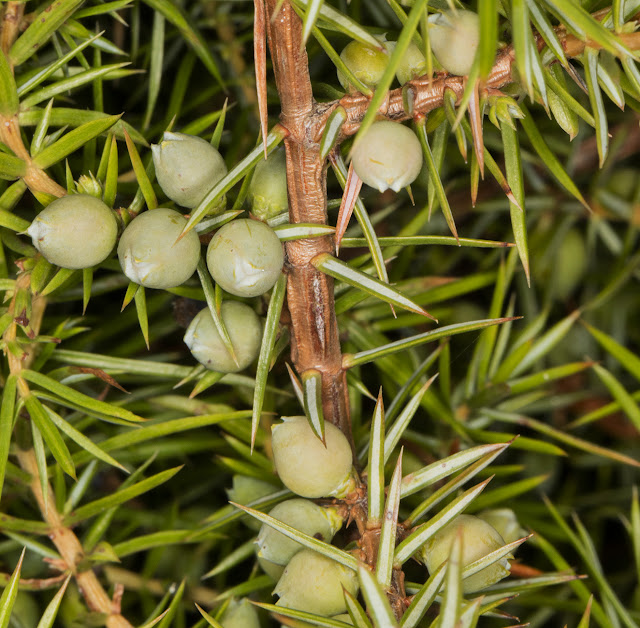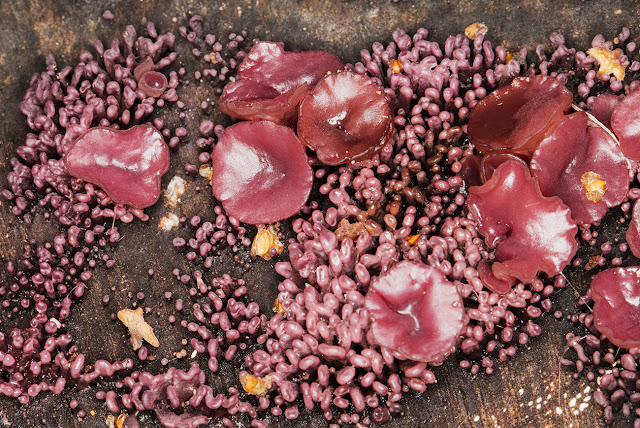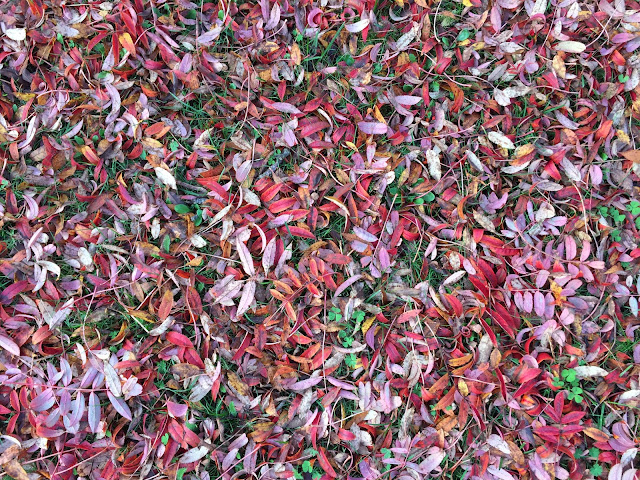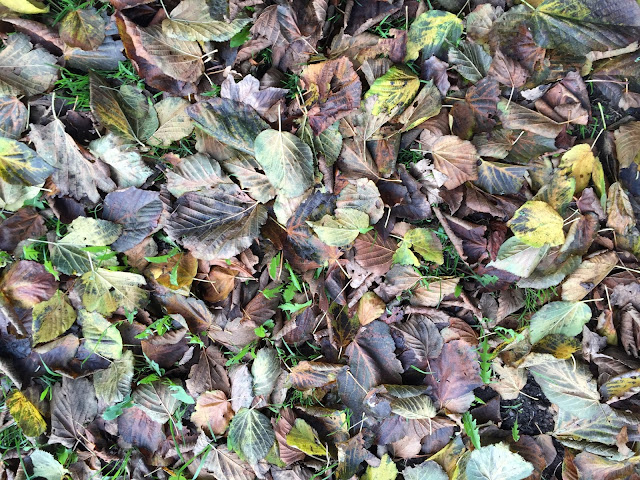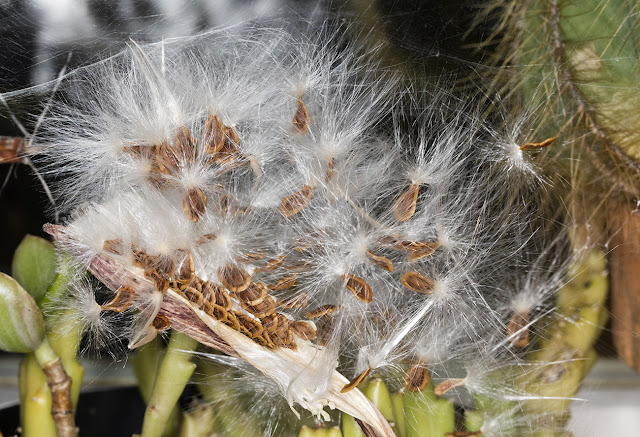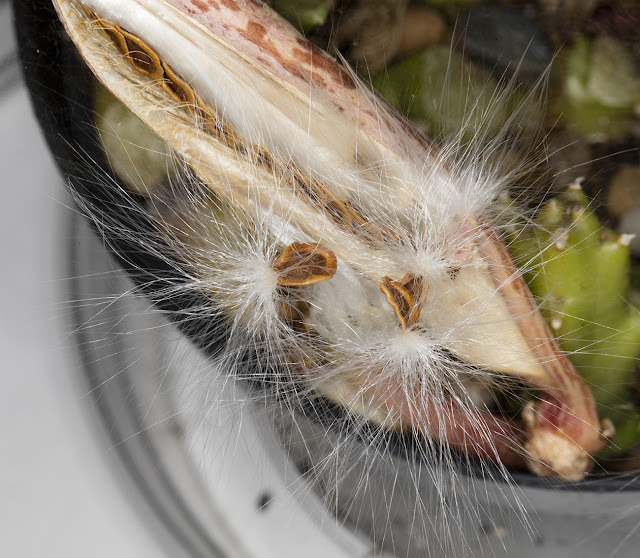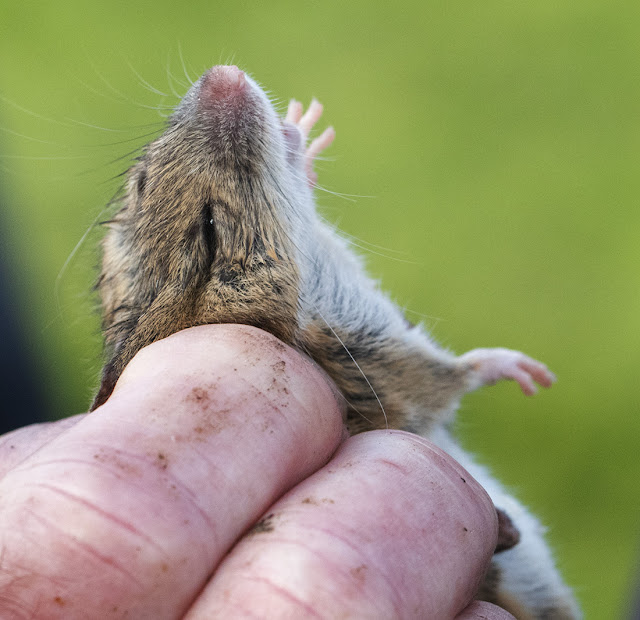 |
| Wood Mouse, Apodemus sylvaticus. Jubilee Country Park, 15 November 2015. |
In mid-November, the Friends of Jubilee Country Park had a "small mammals" morning. I wrote about one of these
small mammal events back in February 2011. This time, local expert Marcus Jordan and his assistant Steven Lofting did all the hard work.
 |
| Marcus Jordan and Steven Lofting. |
Here, they are getting ready to work their way around the traps that had been set the previous evening. The box is to carry the emptied traps, and the big plastic bag is to empty the traps into.
When the traps are set, they contain some straw, some apple and carrot, some seeds and a few blowfly maggots, to cater for any of the variety of small animals that might be caught. The maggots are in case of shrews, which need to eat very often or they will starve. Shrews have a very fast metabolism and react badly to being handled, so they are let go straight away if they are found in a trap.
The whole contents of the trap are emptied into the big plastic bag. This lets the trappers see and sort out what is in there. In theory it is easy, but in practice the mice and voles are not keen on being sorted out, and this time two of them managed to be up a trapper's arm and away into the wood before they could be grasped. They are very quick!
The idea is to corner them so that they can be lifted out by their scruffs, rather like kittens.
 |
| Contents of a small mammal trap, including a Wood Mouse. Jubilee Country Park, 15 November 2015. |
 |
| Wood Mouse being cornered and grasped. Jubilee Country Park, 15 November 2015. |
The creatures are then identified, sexed and weighed. To weigh them, they are put into a small plastic bag, and the weight of the bag is subtracted from the figure shown on the scales. The mouse at the top of this page has just been weighed. Then they are released, having suffered only indignity.
 |
| Bank Vole, Myodes glareolus. Jubilee Country Park, 15 November 2015. |
We found Wood Mice and this Bank Vole. The tail is shorter than that of a Wood Mouse, though I didn't manage to capture the tip of it to demonstrate; and it has much smaller ears. The vole has just been weighed, and unfortunately for it, the weighing bag by that time contained rather a lot of Wood Mouse urine. They do tend to wee when alarmed.
Marcus and Steven thought at one point that we might have a Yellow-necked Mouse ..
But although it showed some yellow in the neck area, it was not a complete collar, so this was just a big healthy Wood Mouse. A male, this time.
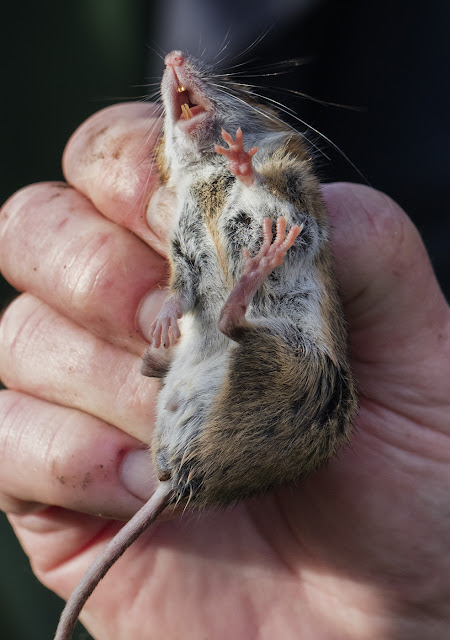 |
| Wood Mouse, male. Hedgerow near Thornton Wood, Jubilee Country Park, 15 November 2015. |
(All photos taken with my EOS 5DS and 100mm macro lens, not using the flash so as not to alarm or blind the small mammals.)
Later addition: A mammals expert says it is not so easy to discount the possibility that this mouse might be a Yellow-neck, after all, so it might be better to consider it an undetermined Apodemus species.
